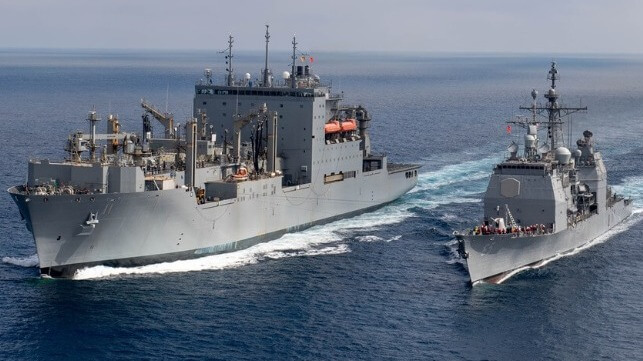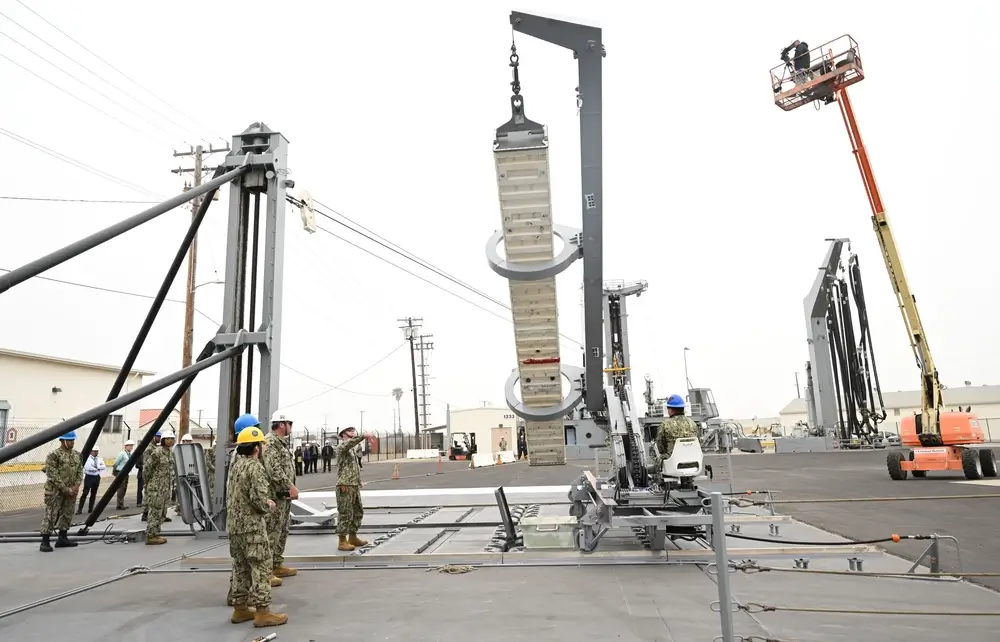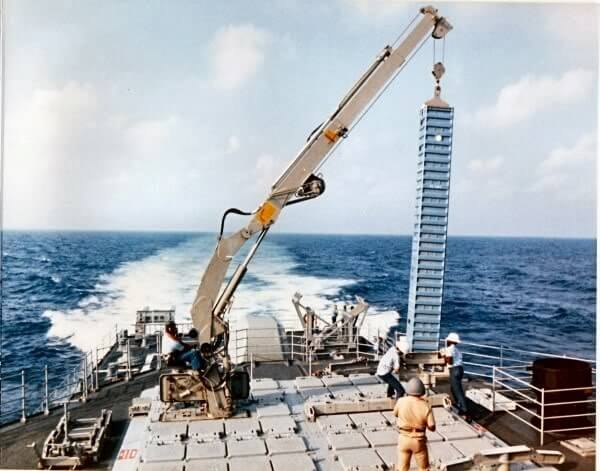U.S. Navy Trials At-Sea Missile Cell Reloading for First Time in Years

For the first time in years, the U.S. Navy has successfully trialed a device for reloading the missile magazine aboard its destroyers and cruisers. The task is a comparatively simple crane hoist in port, but in a rolling seaway, it is complicated enough to require years of R&D to solve.
On October 11, sailors aboard the Ticonderoga-class cruiser USS Chosin used the hydraulically-powered TRAM device to load an empty missile canister into the ship’s MK 41 vertical launching system (VLS) while off the coast of San Diego on Oct. 11. In calm conditions, Chosin connected to the auxiliary USNS Washington Chambers, which transferred over the canister using an underway replenishment cable system. The sailors then used the TRAM device to move the missile canister on rails attached to the cruiser’s VLS modules, tilt it upright, and lower it into a VLS cell.
All Ticonderoga-class cruisers and early Arleigh Burke-class destroyers had a similar capability in the form of an onboard crane - a "strikedown module" - but it was rarely used, and it was eventually removed in favor of easier and safer reloads in port.
Strikedown module servicing the aft VLS cell magazine of a Ticonderoga-class cruiser (USN file image)
The Navy has resuscitated the idea of at-sea reloads in order to generate more warfighting capacity in the far reaches of the Western Pacific, where distances between safe ports are prohibitively long. Driving hundreds of nautical miles for an in-port reload, then heading back to the battle zone would take each destroyer offline for days in the middle of a war. Instead, using TRAMS, the Navy's destroyers and cruisers could reload from an auxiliary at sea, closer to the action.
“Today, we proved just how game-changing TRAM truly is - and what a powerful deterrent it will be to our competitors,” said Secretary of the Navy Carlos Del Toro, who was on hand for the test. “This demonstration marks a key milestone on the path to perfecting this capability and fielding it for sustained operations at sea.”

A shoreside test of the TRAM prototype at Port Hueneme, July 2024 (USN)
The at-sea test follows a successful land-based demonstration in July at Port Hueneme, where the Naval Surface Warfare Center branch came up with the prototype for TRAM. “The combatant can stay near the fight to be rearmed, refueled and resupplied all at the same time,” said Rich Hadley, UNREP division manager at NSWC Port Hueneme. “As Capt. Arleigh Burke said, ‘All time spent in replenishing was time lost in combat.’ TRAM improves operational effectiveness by reducing the amount of time the warfighter must spend away from the fight replenishing.”
According to Del Toro, the Navy could begin fielding TRAM in an operational role within three years' time - a rapid and comparatively low-cost intervention.

No comments:
Post a Comment